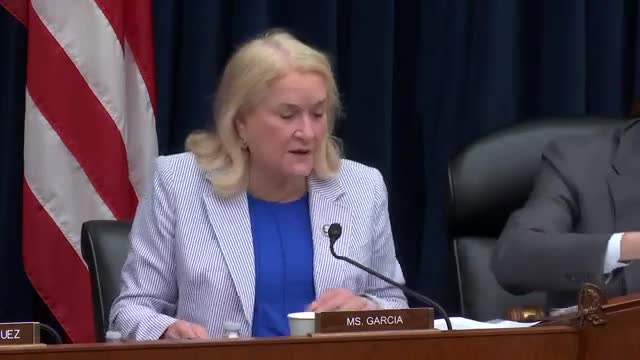House committee narrows eDelivery bill concerns with bipartisan agreement
May 20, 2025 | Financial Services: House Committee, Standing Committees - House & Senate, Congressional Hearings Compilation
This article was created by AI summarizing key points discussed. AI makes mistakes, so for full details and context, please refer to the video of the full meeting. Please report any errors so we can fix them. Report an error »

The U.S. House Committee on Financial Services convened on May 20, 2025, to discuss the markup of various measures, focusing primarily on the Garcia Amendment concerning electronic delivery (eDelivery) of regulatory documents. The meeting highlighted significant debates surrounding consumer protections and accessibility for investors.
The session began with procedural discussions, leading to the introduction of the Garcia Amendment. Representative Hazzenga expressed concerns about the amendment, labeling it as duplicative and redundant. He emphasized that the bill includes provisions for consumer protections, such as a transition period for investors to opt out of eDelivery, which would be communicated through paper notices.
Hazzenga referenced data from the Department of Labor, indicating that the shift to eDelivery has not negatively impacted individuals in rural areas or those with limited internet access. He argued that the only investors subject to eDelivery would be those with active email accounts, thus ensuring that those without email would continue to receive paper documents.
The debate intensified as Representative Lynch raised concerns about the potential for investment companies to create inaccessible email accounts for clients, which could lead to confusion and lack of access to important information. Lynch suggested that the language in the bill might allow for such interpretations, prompting a call for clarification.
In response, Hazzenga and other committee members defended the bill's language, asserting that it was designed to ensure that investors receive necessary documents in a manner that is accessible. The discussion revealed a divide between those advocating for the modernization of document delivery and those worried about the implications for less tech-savvy investors.
Ultimately, after extensive dialogue, Representative Garcia agreed to withdraw her amendment with the understanding that both parties would collaborate to clarify the language in the bill. This decision was framed as a step towards ensuring that the legislation could move forward with bipartisan support.
The committee then proceeded to vote on the amendment in the nature of a substitute, which was adopted. A recorded vote was requested, postponing further discussions until the necessary votes could be taken. The meeting concluded with a commitment to refine the bill's language to address the concerns raised, signaling a collaborative effort to balance modernization with consumer protection.
The session began with procedural discussions, leading to the introduction of the Garcia Amendment. Representative Hazzenga expressed concerns about the amendment, labeling it as duplicative and redundant. He emphasized that the bill includes provisions for consumer protections, such as a transition period for investors to opt out of eDelivery, which would be communicated through paper notices.
Hazzenga referenced data from the Department of Labor, indicating that the shift to eDelivery has not negatively impacted individuals in rural areas or those with limited internet access. He argued that the only investors subject to eDelivery would be those with active email accounts, thus ensuring that those without email would continue to receive paper documents.
The debate intensified as Representative Lynch raised concerns about the potential for investment companies to create inaccessible email accounts for clients, which could lead to confusion and lack of access to important information. Lynch suggested that the language in the bill might allow for such interpretations, prompting a call for clarification.
In response, Hazzenga and other committee members defended the bill's language, asserting that it was designed to ensure that investors receive necessary documents in a manner that is accessible. The discussion revealed a divide between those advocating for the modernization of document delivery and those worried about the implications for less tech-savvy investors.
Ultimately, after extensive dialogue, Representative Garcia agreed to withdraw her amendment with the understanding that both parties would collaborate to clarify the language in the bill. This decision was framed as a step towards ensuring that the legislation could move forward with bipartisan support.
The committee then proceeded to vote on the amendment in the nature of a substitute, which was adopted. A recorded vote was requested, postponing further discussions until the necessary votes could be taken. The meeting concluded with a commitment to refine the bill's language to address the concerns raised, signaling a collaborative effort to balance modernization with consumer protection.
View full meeting
This article is based on a recent meeting—watch the full video and explore the complete transcript for deeper insights into the discussion.
View full meeting